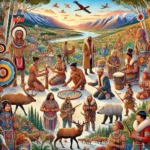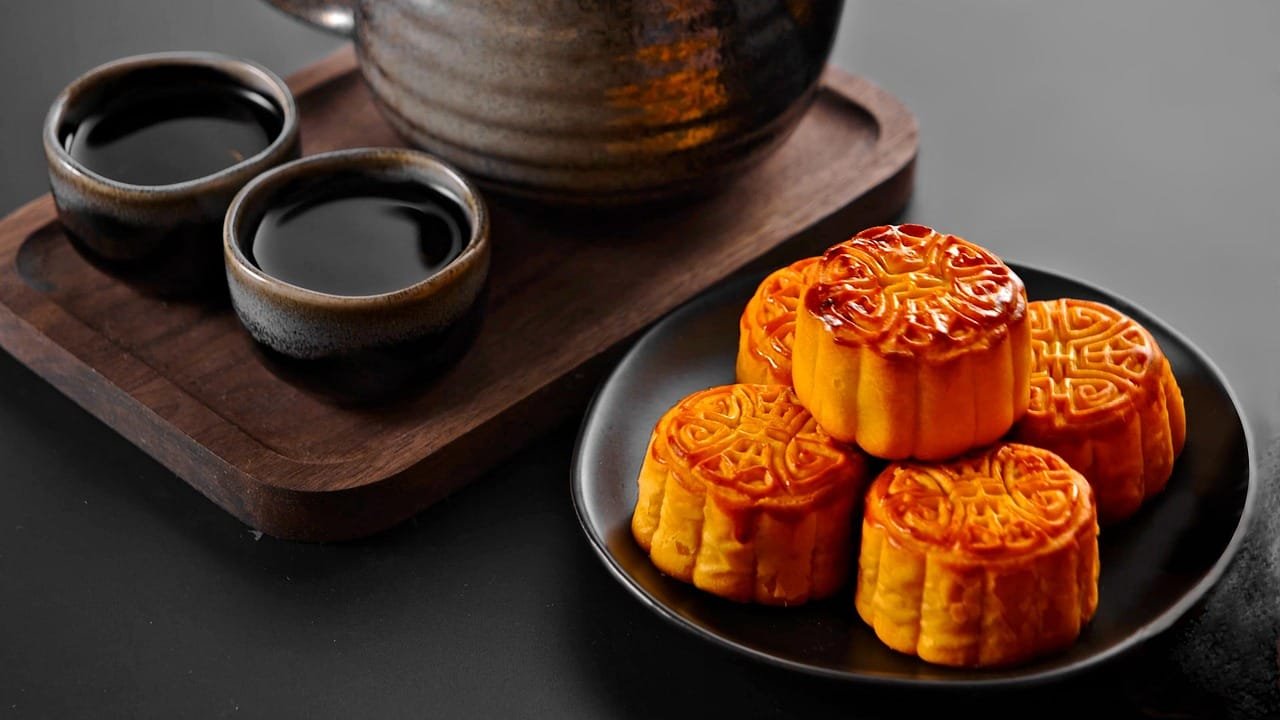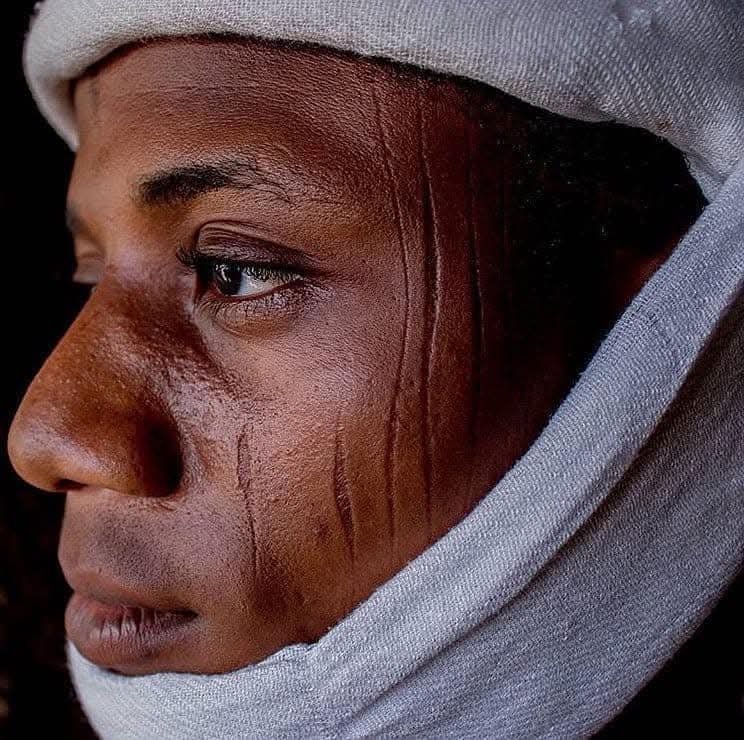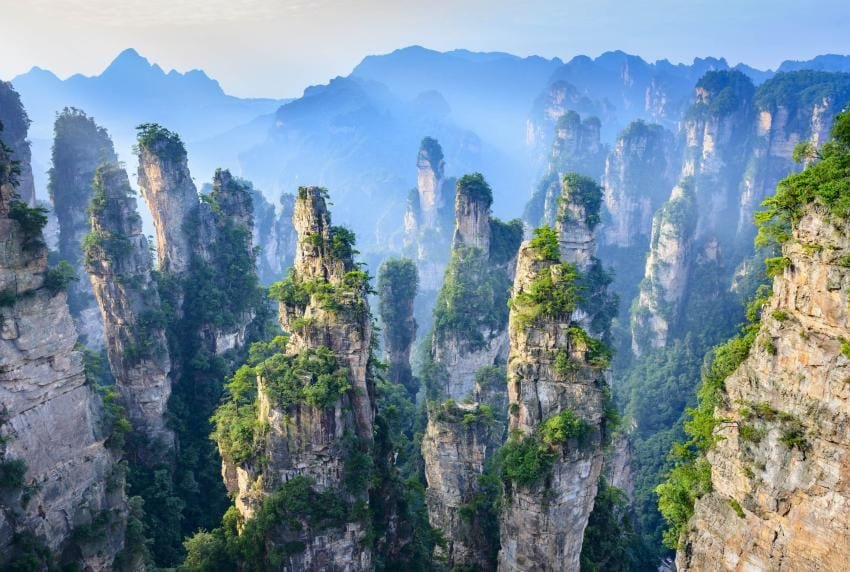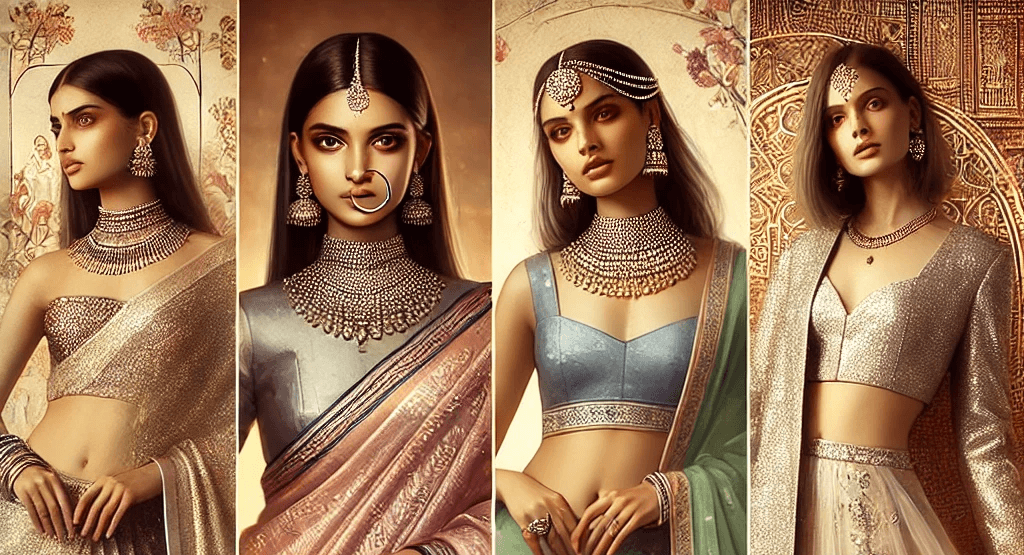The Mid-Autumn Festival (中秋节 – Zhōngqiū Jié) is a harvest festival celebrated on the 15th day of the 8th month of the Chinese lunar calendar, when the moon is at its fullest and brightest. This usually corresponds to mid- to late-September in the Gregorian calendar.
In 2025, the Mid-Autumn Festival will be celebrated on Sunday, October 5th.
· Public Holiday in China: The public holiday in Mainland China will typically be a 3-day break. While the official schedule is announced closer to the date, it is very likely to be from Saturday, October 4th, to Monday, October 6th. This allows for a 3-day long weekend.
The festival is a time for family reunions, giving thanks for the harvest, and praying for good fortune. It is often compared to Thanksgiving in its spirit of gratitude and togetherness.
The Legend: The Story of Chang’e
The most famous legend associated with the festival is the tale of Chang’e, the Moon Goddess.
· The Archer: A heroic archer named Hou Yi shot down nine of the ten suns that were scorching the earth, saving humanity.
· The Elixir: As a reward, he was given an elixir of immortality. Hou Yi did not want to become immortal without his beloved wife, Chang’e, so he gave her the elixir for safekeeping.
· The Theft: One of Hou Yi’s apprentices, Peng Meng, tried to steal the elixir while Hou Yi was away.
· The Sacrifice: To prevent the thief from getting it, Chang’e drank the elixir herself. She then floated up to the moon, where she became immortal but was forever separated from her husband.
· The Reunion: Devastated, Hou Yi would lay out her favorite fruits and cakes in the garden as an offering. On the night of the full moon, he saw her shadow in the moon, and that’s why people gaze at the moon and make offerings to remember Chang’e.
Other characters associated with the myth are the Jade Rabbit (Yù Tù), who pounds the elixir of life on the moon, and Wu Gang, a woodcutter forever doomed to cut a self-healing tree.
Traditions and Customs
- Family Reunion (团圆 – Tuányuán): This is the core of the festival. Family members travel from far and wide to gather for a lavish dinner.
- Moon Gazing (赏月 – Shǎngyuè): After dinner, families will sit together outdoors to admire the bright, full moon. It’s a moment of peace, reflection, and appreciation for being together.
- Lighting Lanterns: People, especially children, carry brightly lit lanterns. In some regions, lanterns are released into the sky or set afloat on rivers.
- Making Offerings: Incense and offerings of food (like mooncakes, pomelos, and taro) are sometimes placed on a table facing the moon as a tribute to Chang’e.
The Iconic Food: Mooncakes
The most iconic food of the festival is the mooncake (月饼 – yuèbǐng).
· What are they? They are rich, round pastries with a thick, tender skin and a sweet, dense filling. The round shape symbolizes completeness and reunion.
· Traditional Fillings: The most classic filling is sweet red bean paste or lotus seed paste, often surrounding one or more salted duck egg yolks in the center, which represent the full moon.
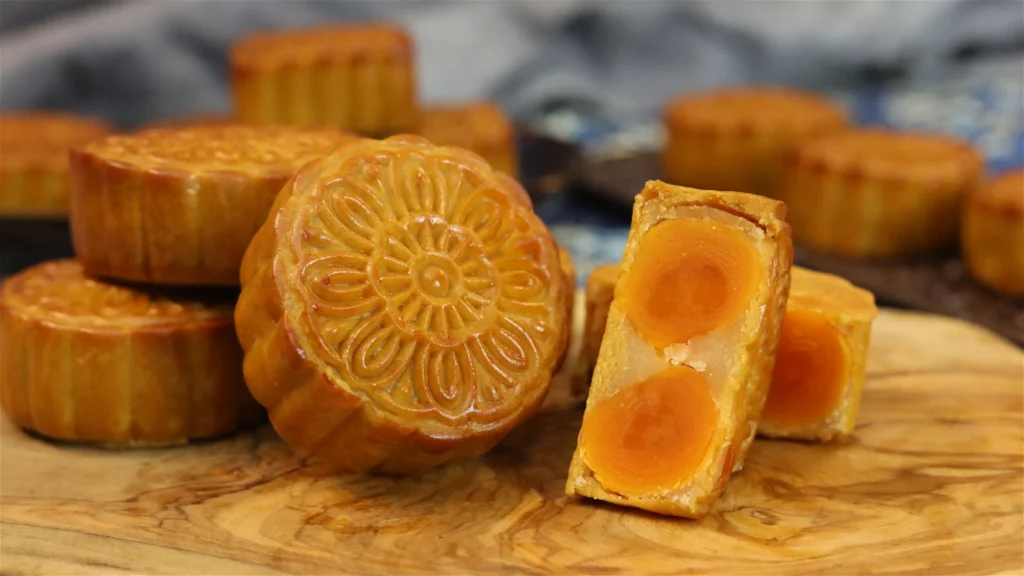
· Modern Variations: Today, there are countless modern flavors, including snow-skin mooncakes, chocolate, green tea, durian, and even savory options with ham or nuts.
· Gifting: Mooncakes are traditionally given as gifts to family, friends, clients, and employees, often in elaborate gift boxes.
Other traditional foods include:
· Pomelos (柚子 – yòuzi): Symbolize abundance and family unity.
· Taro: Eaten for good luck and prosperity.
· Crab: A seasonal delicacy enjoyed during this time.
Greetings for the Festival
The most common greeting is:
· “中秋节快乐!” (Zhōngqiū Jié kuàilè!) – “Happy Mid-Autumn Festival!”
A more poetic and traditional greeting is:
· “月圆人团圆。” (Yuè yuán rén tuányuán.) – “May the full moon bring you and your family together.”
Celebration in Other Cultures
The festival is not exclusive to China. It is also widely celebrated in:
· Vietnam: Known as Tết Trung Thu or the “Children’s Festival,” focused on lion dances and lantern processions for kids.
· Korea: Known as Chuseok (추석), a major harvest festival where people travel to their hometowns, pay respects to ancestors, and share a feast of traditional foods like songpyeon (half-moon rice cakes).
· Japan: A similar moon-viewing tradition is known as Tsukimi (月見), where offerings of rice dumplings (dango) and susuki grass are made.
· Singapore, Malaysia, and the Philippines: Celebrated by the ethnic Chinese communities in these countries with lanterns, mooncakes, and family gatherings.
In essence, the Mid-Autumn Festival is a beautiful celebration of family, gratitude, and the hope for a bright and prosperous future, all under the glow of the brightest moon of the year.

